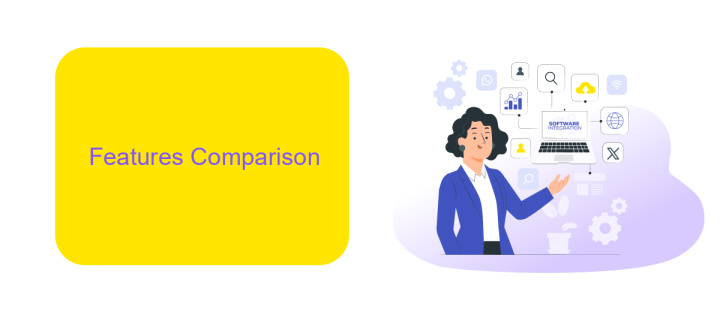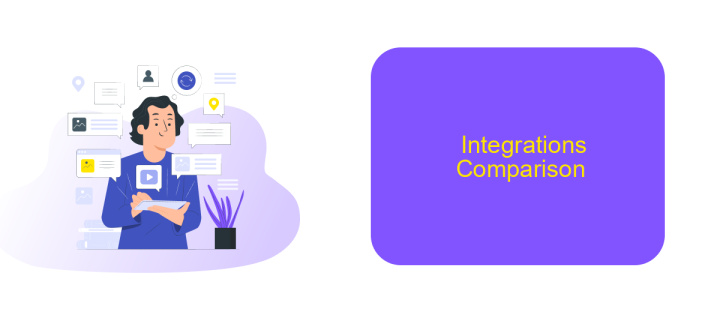Zapier Vs Parabola
In the rapidly evolving landscape of automation tools, Zapier and Parabola stand out as powerful platforms that streamline workflows and enhance productivity. This article delves into a comparative analysis of Zapier and Parabola, examining their features, ease of use, and potential applications. Whether you're a seasoned automation expert or a newcomer, understanding these tools can significantly impact your efficiency and business outcomes.
# Introduction
In today's digital landscape, automation tools have become essential for businesses aiming to streamline their operations. Two prominent players in this field are Zapier and Parabola. Both platforms offer unique features and capabilities that cater to different business needs. Understanding their strengths and weaknesses can help you make an informed decision.
- Zapier: Known for its user-friendly interface and extensive app integrations, Zapier is ideal for automating repetitive tasks without any coding knowledge.
- Parabola: This tool excels in data transformation and complex workflows, making it perfect for businesses that require more advanced data manipulation.
- ApiX-Drive: Another noteworthy service, ApiX-Drive, offers seamless integration capabilities, allowing you to connect various apps and automate workflows effortlessly.
Choosing between Zapier, Parabola, and ApiX-Drive depends on your specific needs and technical expertise. While Zapier is great for simple automation, Parabola offers more advanced features for complex tasks. ApiX-Drive, on the other hand, provides a balanced approach with its robust integration options. By evaluating these tools, you can optimize your business processes and achieve greater efficiency.
Features Comparison

When comparing Zapier and Parabola, it's essential to consider their distinct features. Zapier excels in its user-friendly interface, allowing users to create automated workflows between apps with minimal effort. It supports over 3,000 integrations, making it a versatile tool for various business needs. Zapier's conditional logic and multi-step workflows provide advanced automation capabilities, catering to users looking for a straightforward yet powerful solution.
Parabola, on the other hand, focuses on data transformation and complex workflows. It offers a visual interface where users can manipulate data through drag-and-drop actions, making it ideal for data-heavy tasks. Parabola supports integrations with popular apps but is particularly strong in handling CSV and API data. For businesses needing intricate data processing, Parabola is a robust choice. Additionally, services like ApiX-Drive can complement both Zapier and Parabola by providing seamless integration solutions, further enhancing automation and efficiency.
Pricing Comparison

When comparing the pricing of Zapier and Parabola, it's essential to consider the value each platform offers for their respective costs. Both tools provide automation solutions, but their pricing structures differ significantly, which can influence your decision based on your specific needs and budget.
- Zapier: Zapier offers a free plan with limited features, while its paid plans start at .99 per month for the Starter plan, per month for the Professional plan, and 9 per month for the Team plan. Enterprise solutions are available upon request.
- Parabola: Parabola's pricing starts with a free plan that includes limited usage. Paid plans begin at per month for the Plus plan, 0 per month for the Advanced plan, and custom pricing for the Enterprise plan.
If you're looking for an alternative with flexible pricing for integration setups, consider ApiX-Drive. ApiX-Drive offers a variety of plans starting from a free tier, with paid plans that are competitively priced, catering to different business needs and budgets. This makes it a versatile option for businesses seeking cost-effective automation solutions.
Integrations Comparison

When comparing Zapier and Parabola in terms of integrations, both platforms offer robust capabilities, but they cater to different needs. Zapier is known for its extensive library of integrations, supporting over 3,000 apps, making it a versatile choice for various automation tasks. Parabola, on the other hand, excels in data transformation and is particularly useful for complex workflows involving large datasets.
Zapier's strength lies in its ease of use and wide range of supported applications. It allows users to quickly set up automated workflows, known as "Zaps," between different apps with minimal effort. Parabola, while also user-friendly, shines in scenarios where data manipulation and complex logic are required, offering a visual interface to build intricate workflows.
- Zapier: Over 3,000 app integrations
- Parabola: Advanced data transformation capabilities
- ApiX-Drive: Supports integration with various services and apps
ApiX-Drive is another excellent tool for setting up integrations, offering a user-friendly interface and supporting a wide range of services and applications. It provides a seamless way to connect different platforms, making it a valuable addition to your automation toolkit alongside Zapier and Parabola.
Conclusion
In comparing Zapier and Parabola, it becomes clear that both platforms offer robust solutions for automating workflows and integrating various applications. Zapier excels in its user-friendly interface and extensive library of pre-built integrations, making it an excellent choice for businesses looking for quick and easy automation. On the other hand, Parabola shines with its ability to handle complex data transformations, making it ideal for users who need more sophisticated data manipulation capabilities.
For those seeking an alternative that combines ease of use with powerful integration capabilities, ApiX-Drive is worth considering. ApiX-Drive offers a seamless way to connect different services and automate tasks without requiring extensive technical knowledge. Its intuitive interface and comprehensive range of integrations make it a versatile tool for businesses of all sizes. Ultimately, the choice between Zapier, Parabola, and ApiX-Drive will depend on your specific needs and the complexity of the workflows you aim to automate.
- Automate the work of an online store or landing
- Empower through integration
- Don't spend money on programmers and integrators
- Save time by automating routine tasks
FAQ
What are the main differences between Zapier and Parabola?
Which platform is better for non-technical users?
Can I use either platform to automate data transfers between different systems?
What are some alternatives to Zapier and Parabola for automation and integration?
Is there a cost difference between Zapier and Parabola?
Apix-Drive is a universal tool that will quickly streamline any workflow, freeing you from routine and possible financial losses. Try ApiX-Drive in action and see how useful it is for you personally. In the meantime, when you are setting up connections between systems, think about where you are investing your free time, because now you will have much more of it.


